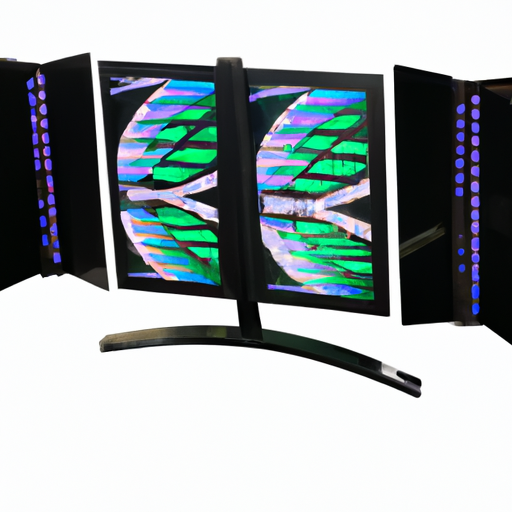The Ultimate Guide to Bar LED Display Screen Manufacture
In the realm of digital signage, bar LED display screens have become increasingly popular for their versatility and effectiveness. These unique displays serve a broad spectrum of industries, including transportation, retail, hospitality, and more. From announcing bus schedules to captivating advertising in stores, bar LED displays offer a compact and innovative solution. Dive into this comprehensive guide to understand everything about bar LED display screen manufacture and how they can revolutionize your business.
Why Bar LED Displays?
Advantages of Bar LED Display Screens
Bar LED display screens present numerous advantages that have led to their widespread adoption:
- Space Efficiency: Designed to fit in narrow spaces, these displays are ideal for buses, trains, and small retail spaces.
- High Brightness and Contrast: They ensure visibility under any lighting condition.
- Customizability: Easily customizable in terms of size, shape, and pixel pitch.
- Durability: Engineered to be robust with long-lasting lifespans.
- Energy Efficiency: Consumes less energy compared to traditional screens.
Industries Utilizing Bar LED Displays
Various sectors benefit from the implementation of bar LED displays:
- Transportation: Real-time information on buses, trains, and subways.
- Retail: Enhanced customer engagement through dynamic signage.
- Hospitality: Real-time updates and interactive menu boards in restaurants.
- Public Spaces: Information dissemination in airports and malls.
The Bar LED Display Screen Manufacturing Process
Step-by-Step Manufacturing Process
1. Concept and Design
Initial stages involve brainstorming and conceptualizing the design. This process takes into account the intended use, desired specifications, and any custom requirements from the client. Software like AutoCAD and SolidWorks may be used to create detailed design schemes.
2. Material Selection
Choosing the right materials is crucial. High-quality LEDs, circuit boards, plastics, and metal frames are selected to ensure durability and performance.
3. Prototype Development
A prototype is developed to test and refine the design. This step often involves:
- 3D Printing: Creates a tangible model of the design.
- Resilience Testing: Ensures the prototype can withstand environmental stresses.
- Client Review: Collect feedback and make necessary adjustments.
4. Assembly Line Production
Once the prototype has been approved, the assembly line production begins:
- LED Module Assembly: LEDs are mounted on circuit boards.
- Cabinet Fabrication: Using metal or plastic, cabinets are constructed to house the LEDs.
- Final Assembly: All components, including power supply and controllers, are assembled into the final product.
5. Quality Control
Quality control is an integral part of the manufacturing process:
- Brightness and Color Calibration: Ensures the display meets required visual standards.
- Durability Tests: Simulates extreme conditions to test the resilience.
- Functionality Checks: Verifies each unit works correctly before shipping.
Innovations in Bar LED Display Manufacturing
Continuous innovations have made bar LED displays more efficient and versatile:
- Flexible LED Bars: Can bend to fit unique space constraints.
- Higher PPI (Pixels Per Inch): Provides sharper and clearer images.
- Advanced Control Systems: Enables dynamic content updates in real-time.
Choosing the Right Manufacturer
Key Considerations
1. Reputation and Experience
Opt for manufacturers with a proven track record and extensive experience in the industry.
2. Customization Options
Ensure the manufacturer offers extensive customization to meet your specific requirements.
3. Quality Assurance
Inquire about their quality control processes to ensure you receive a reliable product.
4. After-Sales Support
Look for manufacturers that offer robust after-sales support, including warranties and maintenance services.
Top Bar LED Display Screen Manufacturers
While there are many manufacturers globally, a few stand out due to their superior quality and customer service:
- Shenzhen Liantronics: Renowned for innovative designs and durability.
- Leyard: Offers extensive customization and state-of-the-art technologies.
- Unilumin: Known for excellent after-sales support and high-quality displays.
Applications of Bar LED Display Screens
Transportation
Bar LED displays are widely used in transportation for displaying:
- Schedules and Timetables: Real-time updates for passengers.
- Route Information: Onboard displays showing upcoming stops.
Retail
In retail settings, these screens are used for:
- Digital Shelves: Dynamic pricing and promotions.
- Interactive Displays: Engaging customers with multimedia content.
Hospitality
In the hospitality sector, bar LED displays serve various purposes:
- Digital Menu Boards: Easily updateable to reflect daily specials.
- Interactive Information Boards: Offering guests information about facilities and nearby attractions.
Public Spaces
They are ideal for public spaces to display:
- Advertisements: High-impact visual advertising.
- Information Boards: Real-time updates for events or emergencies.
Maintaining Bar LED Display Screens
Routine Maintenance Steps
To ensure longevity and optimal performance:
- Regular Cleaning: Remove dust and grime using appropriate cleaning agents.
- Software Updates: Keep control systems updated to the latest version.
- Visual Inspections: Regularly inspect for any sign of wear and tear.
Troubleshooting Common Issues
Here are some common issues and their solutions:
- Dim Images: Adjust brightness settings or check power supply.
- Flickering Screens: May indicate a loose connection or need for software update.
- Dead Pixels: Usually resolved through professional servicing.
Future Trends in Bar LED Display Manufacture
Eco-Friendly Manufacturing
With increasing environmental awareness, manufacturers are focusing on:
- Energy-Efficient LEDs: Reducing power consumption.
- Recyclable Materials: Using eco-friendly materials in production.
Integration with AI and IoT
Bar LED displays are becoming smarter through:
- AI Integration: For real-time facial recognition and personalized content.
- IoT Connectivity: Allows remote monitoring and control of multiple displays.
Improved Resolution and Flexibility
Ongoing advancements are leading to:
- Higher Resolutions: Providing crystal clear images.
- Flexible Designs: Enabling more creative and innovative applications.
Conclusion
Bar LED display screens offer a compact, durable, and versatile solution for a variety of industries. From the initial design to assembly and quality control, understanding the intricacies of bar LED display screen manufacture can help you make informed decisions when selecting the right product and manufacturer. As technologies continue to evolve, these displays will undoubtedly become even more integral to our daily lives. Whether used for transportation schedules, retail promotions, or interactive information boards, bar LED displays prove to be a remarkable innovation in digital signage.

